4. Recording Procedures - An Overview
Microphone arrangements (main microphone procedure)
In space-related stereophony, we distinguish two fundamental procedures:
Time-difference stereophony
In time-difference stereophony, differences in the signal's transit time to the different mics result in identical differences in the playback speakers. This corresponds to our sense of hearing, in which the eardrums are at a certain distance from each other and where a sound from a source to our left reaches our left eardrum before the right (having had to "go around" the head first).
Intensity stereophony
In intensity stereophony, it is the differences in the signal level are the decisive factor. Observed vertically, the mic capsules are directly one atop the other, and there is no time difference. A strong signal from the left, with a level higher than the sound from the right's by 3dB, will later be positioned as coming from half-left by the listener. Overall, this type of signal processing corresponds better to the processing done on mixing desks and in a final comparison with time-difference stereophony makes it easier to localise the sound, while the time-difference technique creates a more faithful spatial representation.
Time difference procedure
A/B arrangement
The superior depth scaling is an additional advantage to the good spacial impression already mentioned. The A and B mic signals correspond directly to the signals for the left and the right channels. So no conversion as we will see it later in the M/S arrangement is necessary.
In principle the mics are oriented towards the centre of the source, in our case the middle of the choir. Please note that this may restrict the conductor's movements (as may also happen with other arrangements). So it's best to place the mics behind the conductor and above his head height. The mic basis, i.e. the distance between the two mics, should measure between 17.5cm (distance between ears) and 50cm. Due to the difference in time it takes the sound to reach the two mikes, phantom sources of sound arise which create the stereo impression.
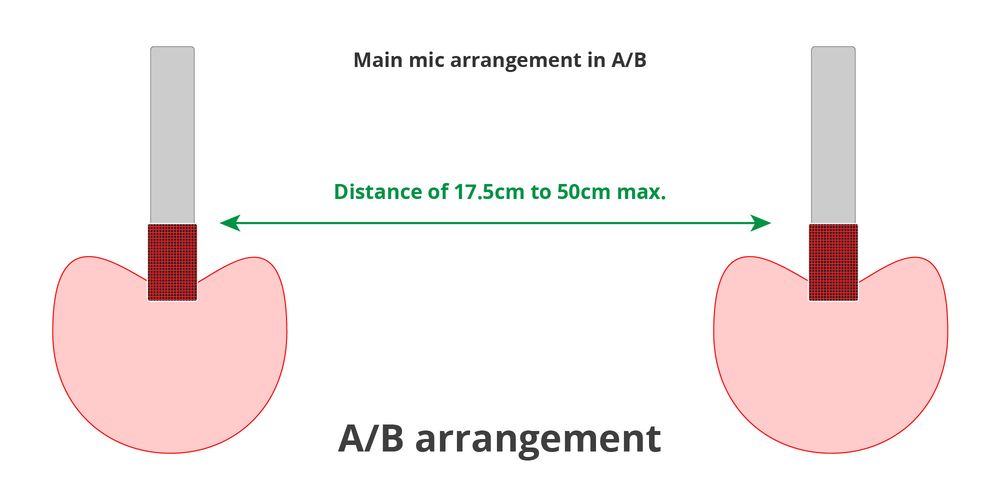
This arrangement is particularly suitable for balanced choirs in acoustically good spaces.
Intensity stereophony procedure
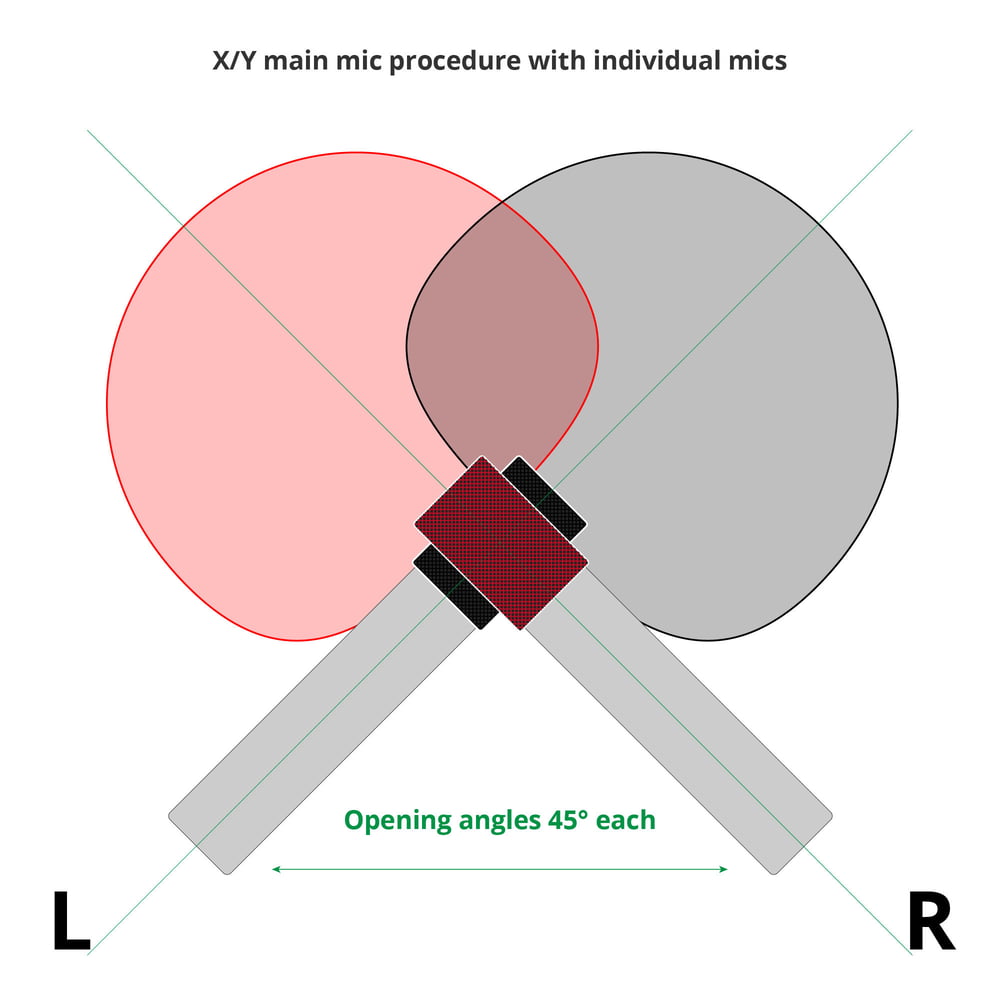
The Blumlein procedure is a special case of the X/Y arrangement. It involves rotating two bidirectional capsules against each other at an angle of 90°. What is interesting about this set-up is the overall frequency-independent directional characteristic, which is crucial for the X/Y procedure. The disadvantage of the bidirectional characteristic is the inherent dropping of the lower-frequency share. This renders the Blumlein arrangement less useful for classical and choir recordings likewise.
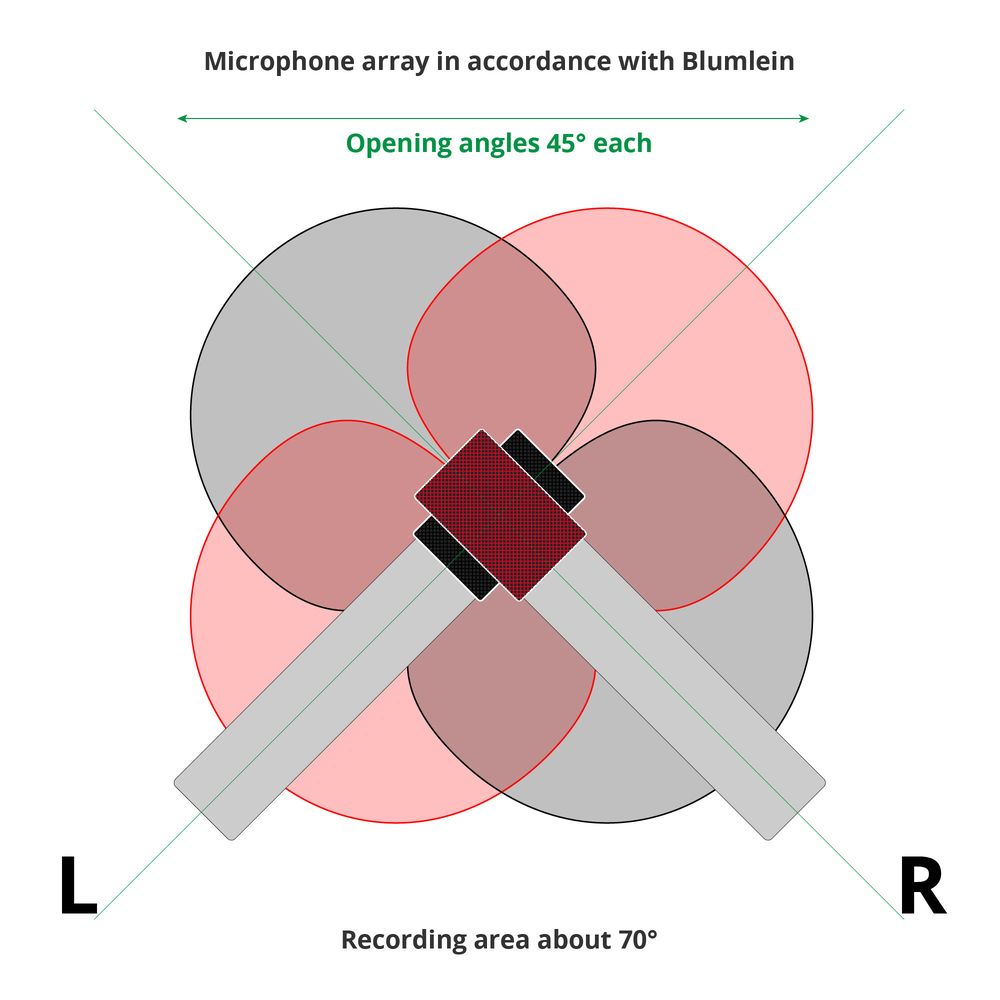
M/S (Mid-side arrangement
The letters here stand for mid - or mono - and side - or stereo. The mics are identical to those in the X/Y procedure described above (coincidence mic). However, the signal must first be converted on arrival, e.g. in a directional mixer so that we get a left and a right signal we can proceed to use. This means a little more effort is necessary. The signal is produced with a bidirectional capsule for the stereo signal and another characteristic of choice, most often cardioid or omnidirectional, for the mono signal. The mono mic is always directed at the centre of the source, while the stereo mic is rotated sideways by 90°. The advantage of this procedure is that the recording area can be manipulated later in the studio, which is not possible in the X/Y-procedure. Furthermore, the M/S-technique achieves a very sharp recording, and finally the mics can be set up by remote control, which makes this technique very popular especially with broadcasters.
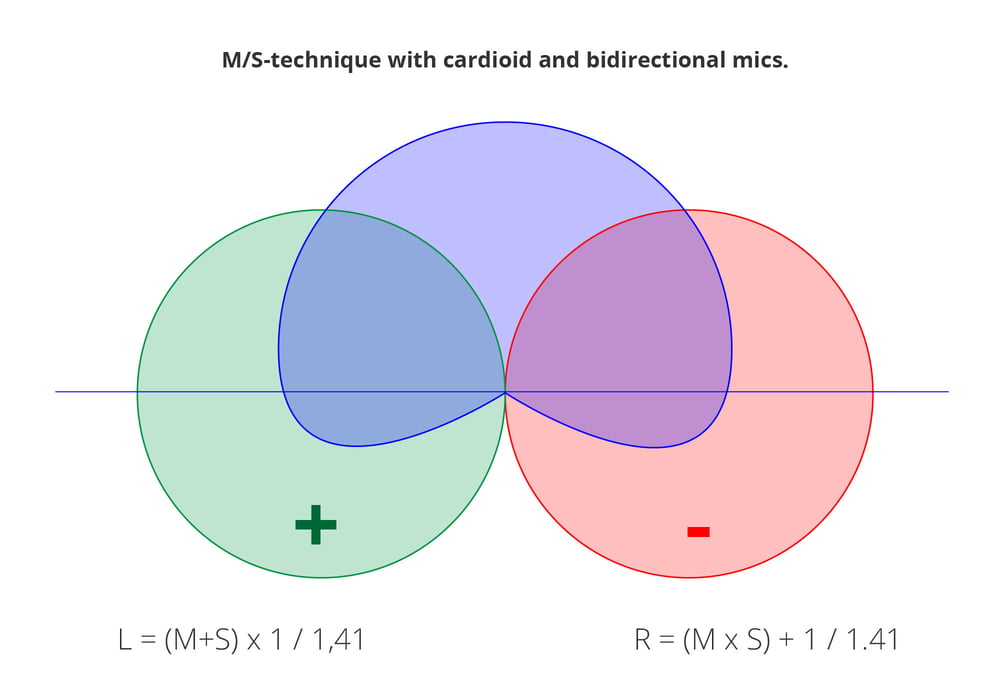
Single mics procedure
This procedure, which is also called polymicrophony, is different from the techniques so far described in that there is no main mic. The idea is to work close to the individual sources, separating them as effectively as possible and thus avoiding crosstalk and diffuse reverberation as much as possible. In our choir recording it could look like this: a mic is put in front of each section (or even in different subsections you may decide to use, depending on the size of the choir and the piece you wish to record) and the various micro channels are recorded to different tracks (multi-tracking). The advantage is that the sound can be manipulated later in the studio, so the mixers can determine the sections relative sound and volume. Another result of this procedure is the faithful spatial representation as well as the strong presence we have already seen in the coincidence mic. The disadvantage is the additional effort, which may be significant, of using several mics and a multi-tack recording device. Therefore, a good solution may be to combine various techniques, which is what often happens in practice: the combination of a main mic with spot mics in single mic set-up.
Mixed recording technique using the ORTF example.
The designation ORTF comes from the public broadcaster active into the 1970s. They were looking for an easy, universal and mono-compatible main mic recording procedure.

One of the main tasks in the ORTF recording technique must be the attempt to represent the recording area in playback through speakers in a range of 60°. To effect this, two cardioid mics are attached to a bar in a way that their capsules are exactly 17cm apart (d). The capsules have an opening angle of 55° each (a), resulting in a total opening angle of 110°. Figuring a width of the sound source of 5 metres (b), the resulting distance of the mic array from the source is 2.30 metres (c). Thus the distance is ideally positioned at 46%. As a rule of thumb you can remember that the distance between mic and source should be about half the width of the recording area.
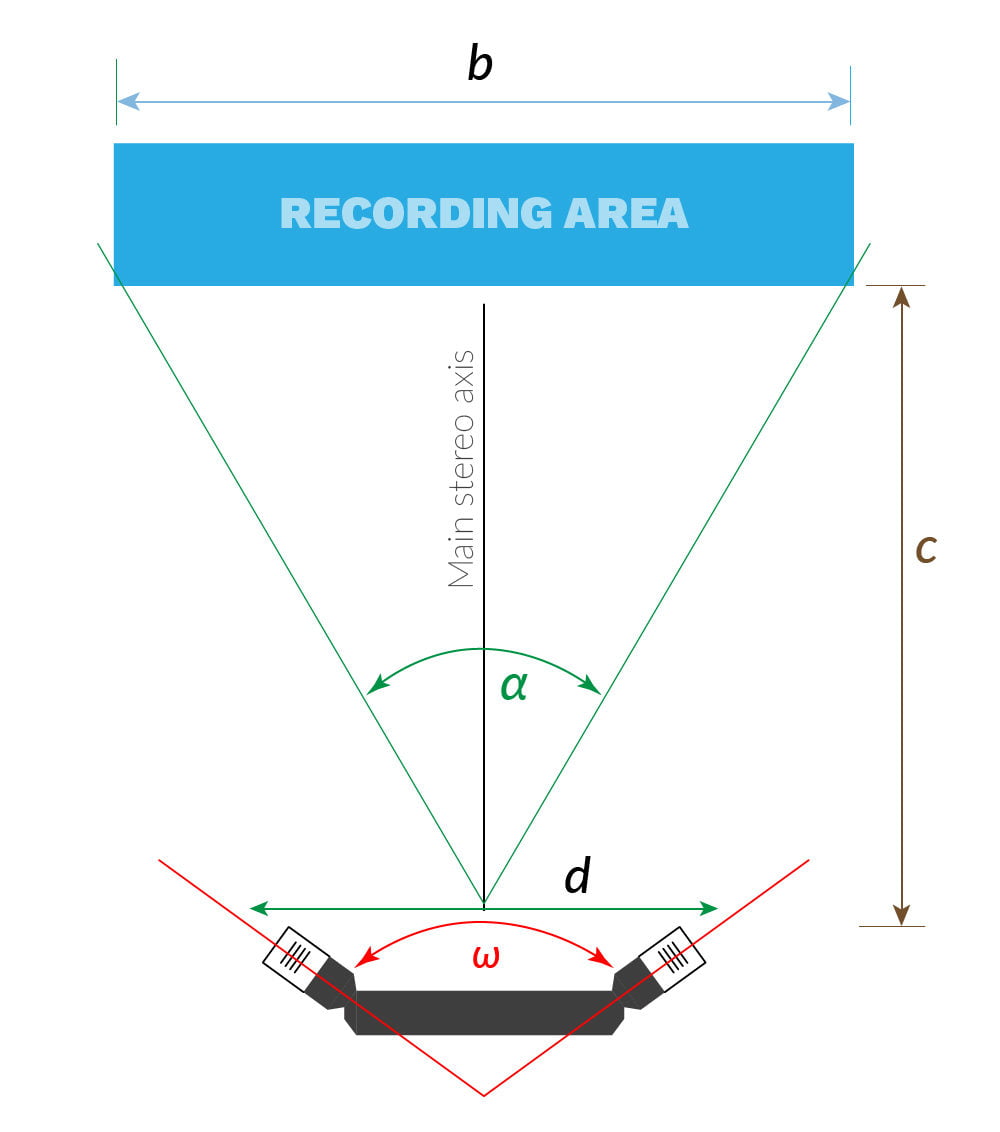

As a main mic procedure, this procedure is relatively easy to set up in practice, and with the reduced timbre in the mono format makes it very compatible to stereo recording, and is worth considering for first-time recordings. But very good mics of this type are quite costly (see above), and if you only record occasionally, rental mics are the netter solution for you (see also mic choice).
Your Contacts
Product Highlights
Do you like what you're seeing?






